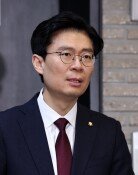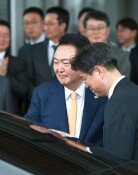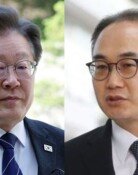President Moon’s Liberation Day speech
President Moon’s Liberation Day speech
Posted August. 16, 2018 07:36,
Updated August. 16, 2018 07:36
In his Liberation Day speech, South Korean President Moon Jae-in said special unification economic zones would be built in the border areas of Gyeonggi and Gangwon provinces when military tension is eased and peace is established on the Korean Peninsula. President Moon also proposed creating the East Asian Railroad Community that includes six Northeast Asian countries such as North Korea and South Koreas, Japan, Russia, and Mongolia and the United States. President Moon’s proposal of building a single economic community for peace and prosperity of the two Koreas appears to be an expression of his determination that despite the stalled denuclearization negotiations and unfavorable economic conditions at home, he would push toward reconciliation between the two Koreas and economic cooperation.
President Moon put a strong emphasis on development of inter-Korean relations, denuclearization, and economic revitalization at home. “Developments in inter-Korean relations are not the by-effects of progress in the relationship between the North and the United States. Rather, advancement in inter-Korean relations is the driving force behind denuclearization of the Korean Peninsula,” said Moon, stressing that South Korea is in the driver’s seat on the Korean Peninsula ahead of the inter-Korean summit in September.
While painting a rosy picture, however, President Moon did not mention any strategies or visions toward complete denuclearization, which he called a pre-requisite for full-scale economic cooperation. Rather, he only emphasized inter-Korean economic cooperation, by saying, “It is a goal to hold groundbreaking ceremonies within this year for the reconnection of railroads and roads.” This remark could give a wrong sign to North Korea that sanctions might be eased sooner or later. Moon should have made it clear that advancement in inter-Korean economic cooperation can be made only when the North fulfills its denuclearization commitments. Policy coordination with the United States is another issue since Washington is concerned that putting inter-Korean relations before denuclearization could weaken the push for peace on the Korean Peninsula.
Eyes are on whether the denuclearization negotiations that have been stalled since the Singapore summit on June 12 would make a breakthrough with U.S. Secretary of State Mike Pompeo’s possible visit to North Korea. Even if the United States and North Korea break the deadlock by declaring an end to the Korean War in exchange for North Korea’s denuclearization efforts, it is highly likely that other issues would come up due to the North’s strategy to earn maximum rewards at each stage of denuclearization and undermine international cooperation. The public wants to know what are the President’s principles and strategies are in the extremely difficult denuclearization process rather than the vague and ideal argument about virtuous cycle.
During his Wednesday speech, President Moon emphasized that the era of peace is coming, by saying, “The Yellow Sea, dubbed the sea of conflict, has now turned into a sea of peace where military threats have disappeared and common prosperity is being pursued.” But the reality is the atmosphere for reconciliation can magically disappear like a mirage if the denuclearization process ends in failure. The denuclearization strategy should be carefully crafted so that the future of the Korean Peninsula would not become a house of cards.







